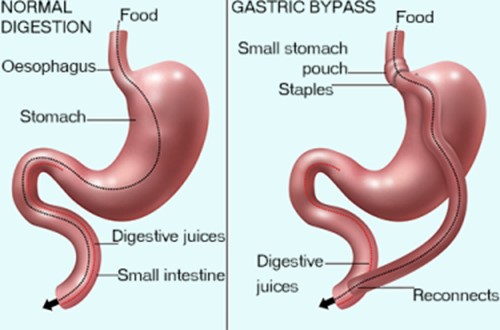What discharge teaching will the nurse provide to a patient who has gastric bypass surgery? Select all that apply.
Each of your meals should contain about 10 tablespoons of food.
You are likely to have little urine output for the first few weeks.
Report any back, shoulder, or abdominal pain to the surgeon.
Be certain to stay hydrated by drinking water.
Solid food can be introduced back into the diet in a week.
Correct Answer : A,C,D
Each of your meals should contain about 10 tablespoons of food: After gastric bypass surgery, the stomach's size is reduced, and the patient's capacity to consume large quantities of food is limited. It is important to educate the patient about appropriate portion sizes to avoid overeating and potential complications.
Be certain to stay hydrated by drinking water: Hydration is crucial after gastric bypass surgery. Patients should be advised to drink enough water throughout the day to prevent dehydration and ensure proper bodily function.
Solid food can be introduced back into the diet in a week: Following gastric bypass surgery, the diet is initially limited to liquid and pureed foods. Gradually, solid foods can be reintroduced into the diet over time, typically after a week or as directed by the surgeon. This information is important for the patient to understand the progression of their diet post-surgery. You are likely to have little urine output for the first few weeks: This statement is not true and may cause unnecessary concern for the patient. Urine output should not be affected by gastric bypass surgery unless there are other complications.
Report any back, shoulder, or abdominal pain to the surgeon: While it is important to report any significant pain or discomfort to the surgeon, including back, shoulder, or abdominal pain, this is not specific to discharge teaching for gastric bypass surgery. Pain management and reporting should be covered during the post-operative care instructions, but it is not limited to discharge teaching alone.

Nursing Test Bank
Naxlex Comprehensive Predictor Exams
Related Questions
Correct Answer is A
Explanation
Aminophylline is a bronchodilator that belongs to the xanthine derivative class of medications. It works by relaxing the smooth muscles surrounding the bronchial airways, which leads to bronchodilation. By dilating the airways, aminophylline helps to relieve bronchospasm, improve airflow, and facilitate easier breathing.
Prevent Infection: Aminophylline is not an antimicrobial medication, and its primary action is not related to preventing or treating infections.
Suppress the cough: While aminophylline may have some antitussive (cough-suppressing) effects, its primary action is bronchodilation rather than directly suppressing the cough reflex. Promote Expectoration: Aminophylline is not primarily indicated for promoting expectoration (bringing up mucus). It mainly focuses on bronchodilation to improve airflow and relieve bronchospasm.
Correct Answer is A
Explanation
Albuterol is a short-acting beta-agonist bronchodilator that provides rapid relief of bronchospasm and helps to alleviate the symptoms of respiratory distress in asthma. It acts quickly to relax the smooth muscles in the airways, improving airflow and relieving wheezing, coughing, and shortness of breath. In an acute asthma exacerbation, albuterol is often the first-line medication used to provide immediate relief and improve respiratory function. Prednisone is an oral corticosteroid that has anti-inflammatory effects and is commonly used in the treatment of asthma. However, it is typically administered orally and takes time to exert its effects. In the emergency department setting, the focus is on providing immediate relief of symptoms, and oral medications like prednisone may not have an immediate effect. Ipratropium is an anticholinergic bronchodilator that can be administered via inhalation. While it is effective in relieving bronchospasm, it is generally used as an adjunct to albuterol and not typically the first-line medication for severe respiratory distress in asthma. Fluticasone is an inhaled corticosteroid that has anti-inflammatory effects and is used for long-term management and control of asthma. It is not appropriate for immediate relief of severe respiratory distress and is not typically used as a first-line medication in the emergency department.
Whether you are a student looking to ace your exams or a practicing nurse seeking to enhance your expertise , our nursing education contents will empower you with the confidence and competence to make a difference in the lives of patients and become a respected leader in the healthcare field.
Visit Naxlex, invest in your future and unlock endless possibilities with our unparalleled nursing education contents today
Report Wrong Answer on the Current Question
Do you disagree with the answer? If yes, what is your expected answer? Explain.
Kindly be descriptive with the issue you are facing.
